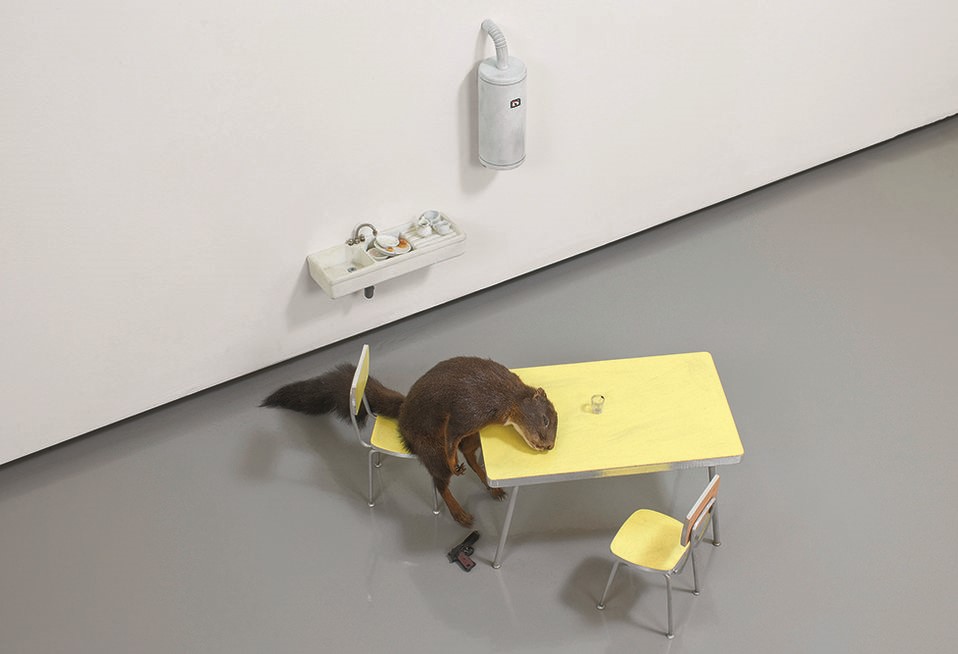5 Reasons to Take Part in Wrocław Off Gallery Weekend
Wrocław Off Gallery Weekend is a unique event that is organized in Wrocław, Poland on the October 18–20, 2024. It networks and unites various...
Guest Profile 16 October 2024
Maurizio Cattelan’s approach to art does not seem to be serious. Instead, the artist speaks loudly with satirical and penetrative messages behind every piece he creates. The unconventional materials employed in his art effectively highlight its meaning. It’s a continuous journey of exposing Cattelan’s vulnerable side, the ugliness of humanity, and possible obsolete perceptions of the art world. Nancy Spector in Maurizio Cattelan: All mentions that Cattelan’s art practice emerges from “desperation and guilt.” The artist constantly intrigues the audience with his specialty: unexpectedness rooted in these two features.
By playing the (neurotic) fool, he offers himself up as an Everyman, suggesting that this archetypal figure is ultimately more fragile than appearances may allow.
Nancy Spector, Maurizio Cattelan: All, 2011, p. 20.

Maurizio Cattelan, Bidibidobidiboo, 1996. Photography by Zeno Zotti. Harper’s Bazaar. Detail.
I think you should always try to touch upon themes that are meaningful to everyone: For this reason, the themes in my works are things like childhood, sadness, suicide, and so on.
Maurizio Cattelan is Dead: Life & Work, 1960-2009, 2012.
This work is one of Cattelan’s earlier pieces that encapsulates the dark humor he has employed throughout his career. The bright yellow Formica dining table draws visitors’ attention to this small installation (45 x 60 x 58 cm; 17 3/4 x 23 1/2 x 22 3/4 in). The taxidermized squirrel looks lifeless, its head resting on the table and its arms hanging down. A handgun is on the floor at the end of its right foot.
The contrast between the title, which was derived from “the magic words of Cinderella’s fairy godmother (‘Bibbidi-Bobbidi-Boo’) in the 1950 Disney film,” as noted by Nancy Spector in the book Maurizio Cattelan: All, and the implied suicide narrative of the piece itself speaks to the harsh reality imposed on a working-class population.
It returns to the surroundings—the artist’s decision to incorporate his modest childhood home kitchen, which is the epitome of a low-income Italian family, touches on the unbearable weight of financial strain experienced by the artist and others in similar situations. The use of a taxidermized squirrel, the woodland animal often portrayed as a cheeky, aspiring character in children’s stories and movies, as a subject of a tragedy is oddly humorous.

Maurizio Cattelan, A Perfect Day, 1999. Massimo De Carlo, Milan/London/Hong Kong. GQ.
The first encounter with this photograph could be deceptive—Cattelan’s repetitive employment of taxidermized animals might interfere with viewers’ judgments about whether this person is real. This incredible yet disturbing live performance was captured at the opening reception of the same title, A Perfect Day, at Galleria Massimo De Carlo in Milan, Italy. The artist decided to tape his Milan art dealer, Massimo De Carlo, to the gallery wall with duct tape for the evening.
One might wonder who would agree to do this or who would think of doing this to someone for hours. This seemingly reckless decision led to the art dealer’s unconsciousness and a trip to the hospital. It is rare to face a gallerist who is “the middleman” in the art market being publicly displayed and at the center of attention. The dealer in charge of the sale becomes the object for sale. This performance piece becomes self-referential of the art world. It suddenly makes visible the relationship between an artist and a gallerist, which has always existed.

Maurizio Cattelan, Untitled, 2001, Museum Boijmans Van Beuningen, Rotterdam, Netherlands. Photograph by Zeno Zotti. Harper’s Bazaar.
A wax figure of Cattelan protrudes from a hole in the floor inside the museum. Numerous questions may arise when visitors step inside the room. This installation was ongoing while an unrelated exhibition was held in the same room. Paintings on the walls were framed with gilded ornate frames matching the subject matter depicted. The figure of the artist was staring into one of the paintings.
It is hard to determine if the facial expression is one of curiosity or dark motive. The figure’s intention could be anything between thievery and an odd attempt to challenge the accepted way of viewing art. By placing himself “as an outsider, thief, or impostor amid established art history”1 in this work, Cattelan exposes his vulnerable side as an artist.

Maurizio Cattelan, All, 2007. Whitewall.
Nine bodies covered in white cloth in an otherwise empty room give a chill down one’s spine. The windowless room surrounded by bare cement walls, resembling a basement in a morgue, accentuates the feeling of despair and sorrow. The visitors do not know the identity of the dead or the cause of death. All allowed the audience to reflect on the numerous people killed that we see and hear about in the daily news.
These deaths occur around the world every day for many reasons, such as genocide, terrorism, and climate and man-made disasters. This sculpture becomes a “monument to death,” as the artist himself stated. By giving anonymity to the row of shrouded bodies, Cattelan takes away the spectacle and offers the viewers a chance to take in the weight of the innocent lives taken.
The title All represents all the lives lost we encounter and pays respect to the victims. The choice of medium, Carrara marble, used by the great Italian sculptors, accentuates the monumentality of the sculpture. Cattelan’s work in a morgue as a teenager seems to have permanently affected his approach to death in the practice of his art.

A painful moment in history overwhelms onlookers with a dark and heavy monolithic sculpture that instantly takes you back to the day of the September 11, 2001 attacks. Too many lives were lost as a result of the tragic events, and Blind evokes collective grief. There are a lot of memorials built for the victims, and they all share one thing in common—abstraction of the events. They are “the abstract memorial or ‘counter-monuments,’” as Nancy Spector describes in her essay “Blind to What?” Examples of counter-monuments are Reflecting Absence by Michael Arad and Peter Walker and Empty Sky by Frederic Schwartz Associates.
Cattelan’s sculpture defies the trend of 9/11 monuments by directly capturing the exact moment when the buildings sustained the strike. The sculpture offers a vastly different experience from seeing the image of the Twin Towers on the internet by taking over the audience with its massive scale. It shadows the viewers standing below and gives them the impression of having to look up at the once-standing towers. The title Blind speaks to “sightlessness [but] the work itself cannot be unseen without knowledge of that local and global narrative. Cattelan’s new memorial allows us to mourn what was then and what is now without sanctifying an indefensible history.”2

Photograph of Maurizio Cattelan. Harper’s Bazaar.
Cattelan continues to create provocative works that garner attention. Recently, the artist was featured in articles about the possibility of copyright infringement over his work Sunday. Whether it is positive or negative, Cattelan seems to always be the center of attention. His journey of making sharp and witty commentary of the world and himself continues.
Nancy Spector: Maurizio Cattelan: All, New York, NY: Guggenheim Museum Publications, 2011, p. 229.
Nancy Spector: “Blind to What?” in Maurizio Cattelan ‘Breath Ghosts Blind’, Ed. by Roberta Tenconi and Vicent Todoli, 1st edition, Venezia: Marsilio, 2021, p. 141.
Maurizio Cattelan, Shelly Bancroft, Peter T. Nesbet: Maurizio Cattelan Is Dead: Life & Work, 1960–2009, Philadelphia, PA: Triple Candie, 2012.
Nancy Spector: “Blind to What?” in Maurizio Cattelan ‘Breath Ghosts Blind’, Ed. by Roberta Tenconi and Vicent Todoli, 1st edition, Venezia: Marsilio, 2021.
Nancy Spector: Maurizio Cattelan: All, New York, NY: Guggenheim Museum Publications, 2011.
DailyArt Magazine needs your support. Every contribution, however big or small, is very valuable for our future. Thanks to it, we will be able to sustain and grow the Magazine. Thank you for your help!